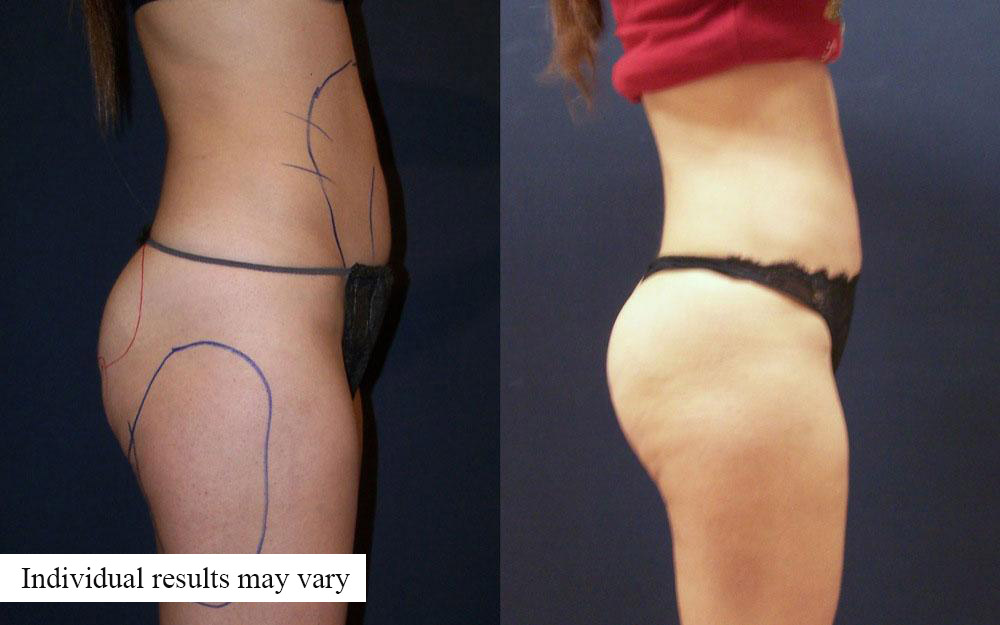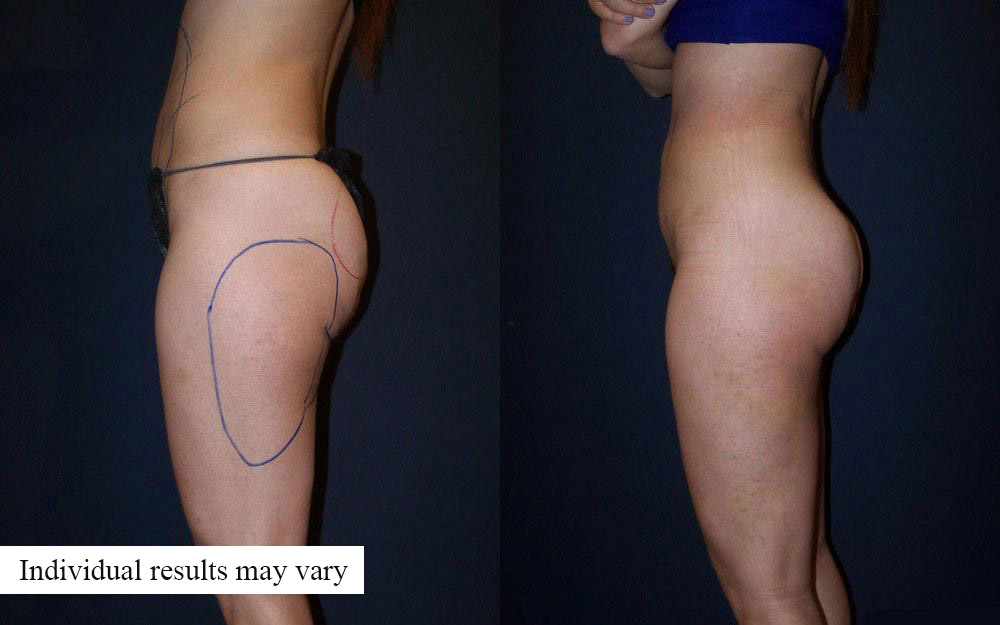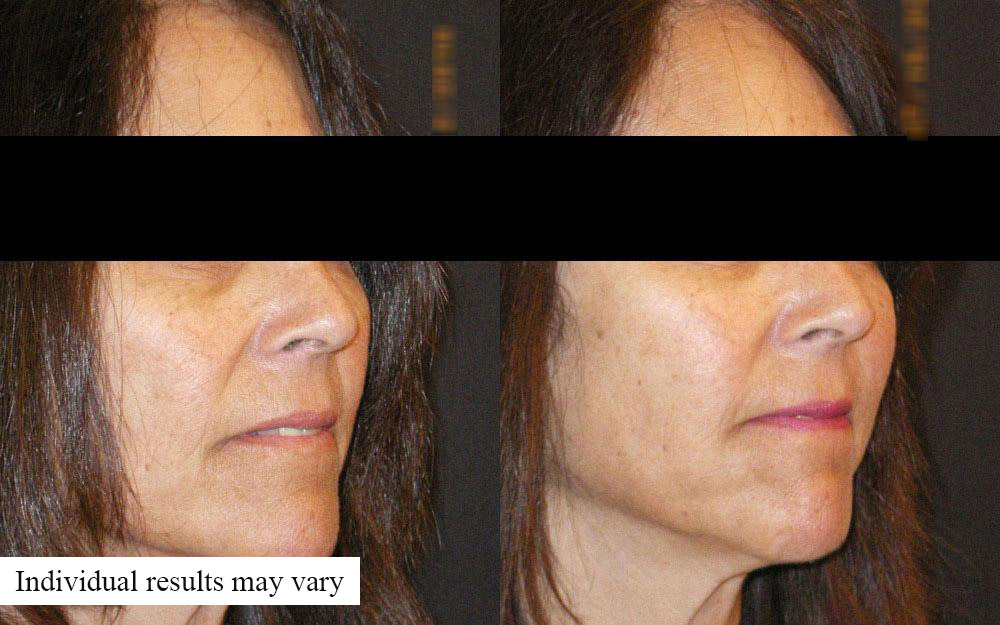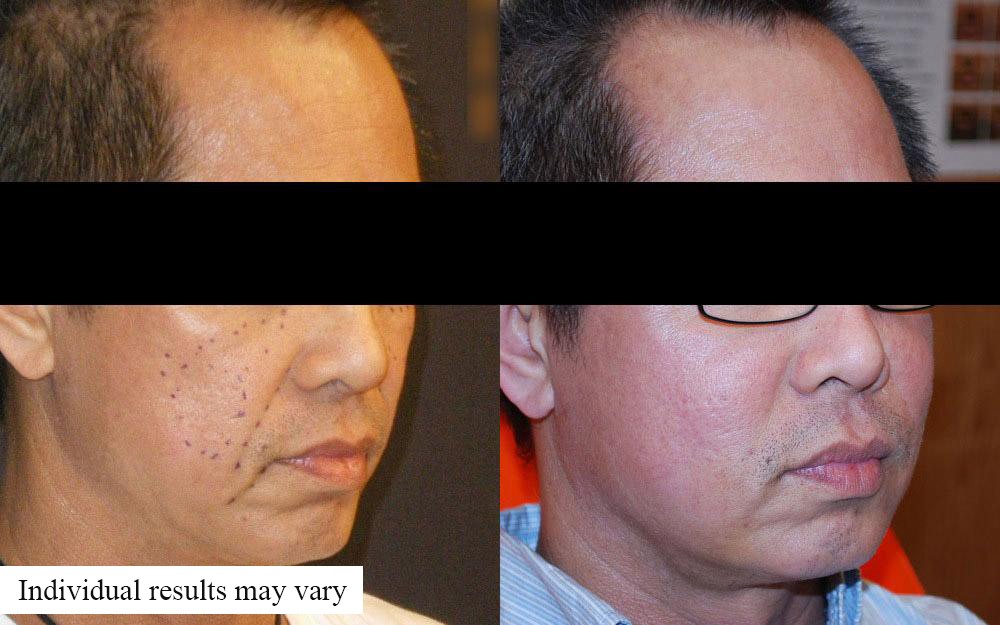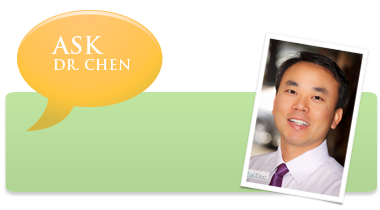

** Any claims regarding the duration or outcome of any treatment, procedure, or service provided are based on optimal results. Individual results may vary.
Fat Transfer
Facial lines and wrinkles are a natural part of the aging process. As the production of collagen underneath your skin begins to decrease and the elastin fibers become weak this will cause the appearance of wrinkles. Although this is a natural part of the aging process, excessive sun exposure, frowning, smiling and squinting may also be a factor.
The two most commonly used methods for facial lines and wrinkles are injectable fillers and fat transfers.
**Individual results may vary
Click on photo to enlarge.
While injectable fillers can decrease the appearance of wrinkles, they might not be suitable for everyone. There are possibilities of allergies to bovine collagen or you may develop an allergic reaction over time. Some injectable fillers can cost up to $800 per syringe and lasts less then one year, thus it is not very cost effective when compared to fat transfers. Regular injections can be considered a continuing expense.
Fat transfer is the perfect solution if you are looking to fill in your facial lines and wrinkles. A popular alternative to other wrinkle treatments fat transfers can plump up facial features or hands with a patient's own fat. Fat transfers are a safe, natural, non-allergenic and lasting procedure intended to recontour your face or any other unwanted areas with wrinkles. Since you are using your own fat cells with fat transfers you can never have an allergic reaction because it is from your own body.
Longevity of fat transfers is usually seen in larger areas of non-movement, for example the cheeks. Fat transfers are also great for correcting atrophic aging of the hands. If you are looking for something to rejuvenate the hands and reduce the hollow and bony appearance then fat transfer is the perfect option. However, not every area of the body responds well to fat transfer. The breast is not a good area to do fat transfer due to the fact that it makes it difficult to detect breast cancer during mammograms.
Procedural Steps
The fat transfer procedure is performed in our office on an outpatient basis. Both the areas where the fat is removed and where the transfer is placed are put under local anesthesia. A small needle attached to a syringe is used to remove fat from the area with the most tightly packed fat, such as the thighs or abdomen.
When the fat is removed it is harvested, processed to remove any excess fluids, and then reinjected using another needle that is placed under your skin beneath the wrinkle. This process may be repeated until the desired appearance is achieved.
Harvesting fat cells for fat transfers and reinjection is performed in conjunction with liposuction. It is also possible for the surgeon to harvest a larger amount of fat to freeze and store for future injections if desired.
Benefits of Fat Transfer
Fat transfers can last up to 3 years. Fat transfer can be very cost effective when combined with another procedure. There's no risk of an allergic reaction.
Expectations after Fat Transfer
Patients are up and about immediately following fat transfers. Any discomfort that does arise may be controlled with medication. There is typically little to no discomfort with fat transfers. If swelling does occur at the treatment site it may last up to 36 hours. There may be some bruising that can be easily covered up with make up. Over the first few months about 35-50% of the fat cells will be absorbed by your body. The remaining 50-65% will stay in place for years to come.
Your initial injection should last at least 6 months. To achieve results that will last for years, patients usually receive 3-4 treatments over a 6 month period.


